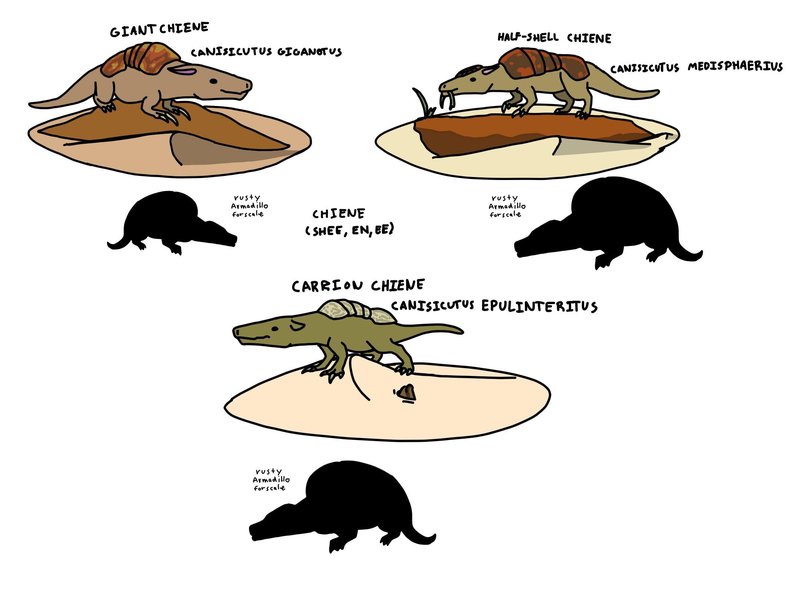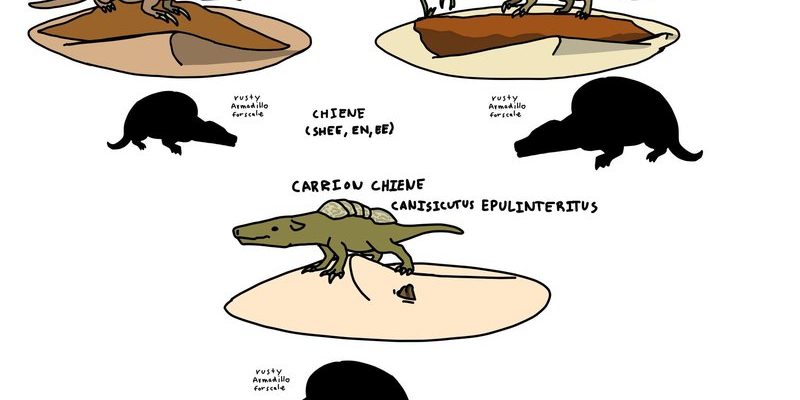
Armadillos belong to a group known as xenarthrans, which also includes sloths and anteaters. They’ve been around for quite a long time, and their story stretches back to a time when mammoths roamed the earth. Today, we’re diving deep into how these unique animals evolved, where they fit into the animal kingdom, and what their journey can teach us about survival and adaptation.
What Are Armadillos Exactly?
Armadillos are fascinating little mammals characterized by their tough, armor-like shells. These shells are made of bony plates covered in skin, creating a protective barrier that shields them from predators. You might think of an armadillo like a tiny tank—it may look adorable, but it’s well-equipped to handle threats!
There are about 21 species of armadillos, and they vary in size and habitat. The most recognized of these is probably the nine-banded armadillo, often spotted bustling through gardens or crossing roads. Despite their tough exterior, armadillos are surprisingly gentle creatures. They primarily feed on insects, worms, and other small invertebrates, using their keen sense of smell to sniff out dinner.
So, what sets them apart in the animal kingdom? Armadillos have an interesting evolutionary past that connects them to some ancient relatives you might not expect.
The Ancestors of Armadillos
The lineage of armadillos can be traced back to the early Cenozoic era, around 65 million years ago, following the extinction of the dinosaurs. Their ancestors were not the cute little creatures we see today. Instead, they were larger, more robust animals known as glyptodonts. These prehistoric giants could weigh up to a ton and had shells that resembled modern armadillos but were significantly bigger and sturdier.
As the climate started changing and the environment shifted, these massive relatives couldn’t quite adapt. Over time, they gradually disappeared, paving the way for the armadillos we know today. This shift illustrates a fundamental rule of evolution: adaptability is key to survival. The smaller-sized armadillos had an advantage as they could thrive in varied habitats, from grasslands to forests.
It’s fascinating to think about how these ancient creatures laid the groundwork for the armadillos we see today. Their traits shaped the modern versions in ways that allowed them to survive and flourish in changing environments.
Special Features and Adaptations
Armadillos are nature’s little survivalists, showcasing some impressive adaptations that have allowed them to thrive. One of their most notable features is their protective armor. This isn’t just for show; it’s crucial for defense against predators. When threatened, an armadillo can curl into a tight ball, presenting an impenetrable barrier.
Another cool adaptation is how armadillos can dig. They have powerful claws that help them burrow into the ground, creating homes that provide safety from threats. This ability not only shelters them but also gives them easier access to food sources like insects or larvae hidden beneath the soil.
You might be wondering how their unique physiology helps them adapt to different environments. For instance, in drier regions, they tend to be more nocturnal to escape the heat of the day. This flexibility showcases their incredible capacity to adjust to their surroundings, which is a significant factor in their continued survival.
Geographic Distribution and Habitat
While armadillos may seem like creatures from a fairy tale, they predominantly inhabit the Americas, with a strong presence in Central and South America. The nine-banded armadillo has expanded its range significantly into the southern United States, even making its way to states like Texas and Florida.
Their preferred habitats include grasslands, forests, and scrublands, but they can adapt to various environments. For example, when living in urban or agricultural areas, armadillos will adjust their foraging habits to find food in gardens or lawns. This adaptability has allowed them to thrive even as human development encroaches on their natural habitats.
However, with changing climates and increasing urbanization, some armadillo populations face challenges. Their ability to adapt has fortunately kept many species alive, but ongoing habitat loss remains a concern. Protecting their habitats is essential for ensuring the continued survival of these remarkable creatures.
The Role of Armadillos in Ecosystems
Armadillos play a critical role in their ecosystems as both predators and prey. As insectivores, they help control insect populations, which can prevent overpopulation and potential crop damage. By burrowing, they aerate the soil, improving its structure and promoting healthy plant growth.
In turn, armadillos serve as a food source for larger predators, such as coyotes and bobcats. This relationship highlights the interconnectedness of ecosystems—every species, no matter how small, has its part to play in maintaining balance.
Armadillos also contribute to their environment in subtle but significant ways. For instance, their foraging habits can help disperse seeds, promoting plant diversity. Each animal impacts its surroundings, illustrating how even the smallest creatures can shape their habitat.
Conservation and Future Challenges
Despite their resilience, many armadillo species face threats from habitat loss, hunting, and climate change. Conservation efforts are crucial to ensure their survival. Organizations are working on protecting natural habitats and raising awareness about the importance of preserving these unique animals.
One of the biggest challenges they encounter is vehicle collisions, especially in areas where they have expanded into urban settings. Their tendency to freeze when startled often leads them into traffic. Education on safe driving in armadillo-prone areas can help mitigate this issue.
You might find it interesting to know that some armadillo species, like the three-banded armadillo, are already facing critical levels of endangerment. Protecting these species isn’t just about saving cute, quirky animals; it’s about preserving the ecological balance that depends on their presence.
The evolutionary history of the armadillo is a captivating story of adaptation and survival. From their ancient ancestors to the charming little creatures we know today, these mammals have weathered the storms of change and emerged as a symbol of resilience. As they continue to navigate their ever-evolving environments, it’s essential to recognize their ecological roles and contribute to their conservation.
Every time you spot an armadillo, remember the incredible journey it has taken through time—survival is more than just existing; it’s about thriving against all odds. By supporting conservation efforts and spreading awareness, we can help ensure that future generations enjoy the company of these extraordinary animals. So, next time you think about armadillos, cherish their remarkable story and the lessons they can teach us about adaptability and perseverance.

